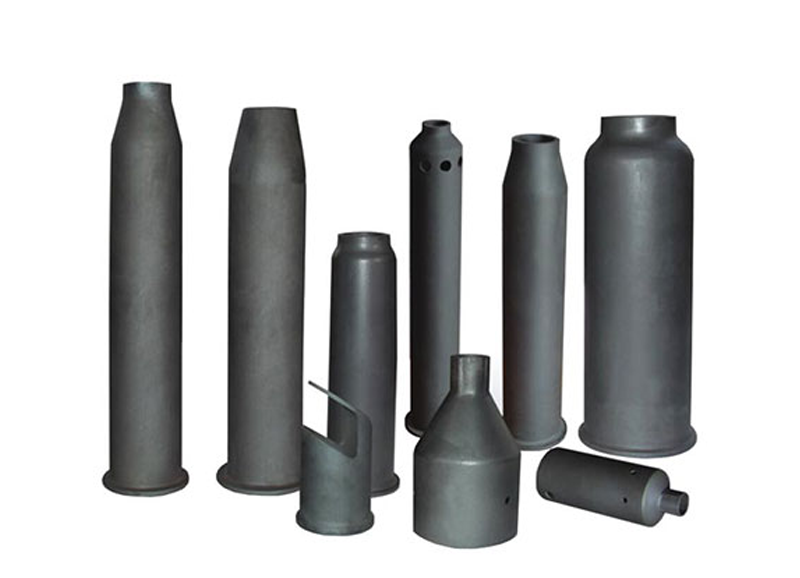Reaction-sintered silicon carbide porcelain has good compressive strength at ambient temperature, heat resistance to air oxidation, good wear resistance, good heat resistance, small coefficient of linear expansion, high heat transfer coefficient, high hardness, heat resistance and destructive, fire prevention and other high-quality characteristics. Widely used in vehicles, mechanical automation, ecological environmental protection, aerospace engineering, information content electronic devices, power energy and other fields, has become a cost-effective and irreplaceable structural ceramics in many industrial fields.
Pressureless sintering is known as a promising SiC calcination method. For different continuous casting machines, press-free sintering can be divided into solid phase calcination and high performance liquid phase calcination. By adding appropriate B and C(oxygen content less than 2%) together in a very fine Beta SiC powder, S. Proehazka is sintered into a SIC calcined body with a relative density of more than 98% at 2020, with Al2O3 and Y2O3 as additives. Calcined 0.5m-SiC under 1850-1950 (particle surface with a little SiO2), the conclusion is that the density of SiC porcelain exceeds 95% of the basic theoretical density, the grain size is small, and the average size is large, which is 1.5μm.
Reactive sintering silicon carbide refers to the whole process of reflecting porous structure billet with liquid phase or high performance liquid phase, improving the quality of billet, reducing the vent hole, and calcining the finished product with a certain strength and dimensional accuracy. Plutonium-sic powder and high purity graphite are mixed in a certain proportion and heated to about 1650 to produce hair embryo. At the same time, it penetrates or penetrates into the steel through the liquid phase Si, reflects with silicon carbide to form plutonium-sic, and fuses with existing plutonium-sic particles. After Si infiltration, the reaction sintered body with detailed relative density and unpacked size can be obtained. Compared with other sintering methods, in the process of high density reaction sintering size transformation is relatively small, can create the correct size of goods, but there is a lot of SiC on the calcined body, the high temperature characteristics of the reaction sintered SiC porcelain will be worse. Non-pressure calcined SiC ceramics, hot isostatic calcined SiC ceramics and reaction sintered SiC ceramics have different characteristics.
Reactive sintering silicon carbide manufacturers: For example, SiC porcelain at the level of calcined relative density and bending strength, hot pressing sintering and hot isostatic pressing calcination are more, and reactive sintering SiC is relatively low. At the same time, the physical properties of SiC porcelain change with the change of calcination modifier. The non-pressure sintering, hot press sintering and reaction sintering of SiC porcelain have good alkaline resistance and acid resistance, but the reaction sintered SiC porcelain has weak resistance to HF and other very strong acid corrosion. When the ambient temperature is less than 900, the bending strength of most SiC porcelain is significantly higher than that of high temperature sintered porcelain, and the bending strength of reactive sintered SiC porcelain drops sharply when it exceeds 1400. (This is caused by the sudden drop in bending strength of a certain amount of laminated glass Si beyond a certain temperature in the calcined body. The high temperature performance of SiC ceramics sintered without pressure calcination and under hot constant static pressure is mainly affected by the types of additives.
Post time: Nov-07-2023






